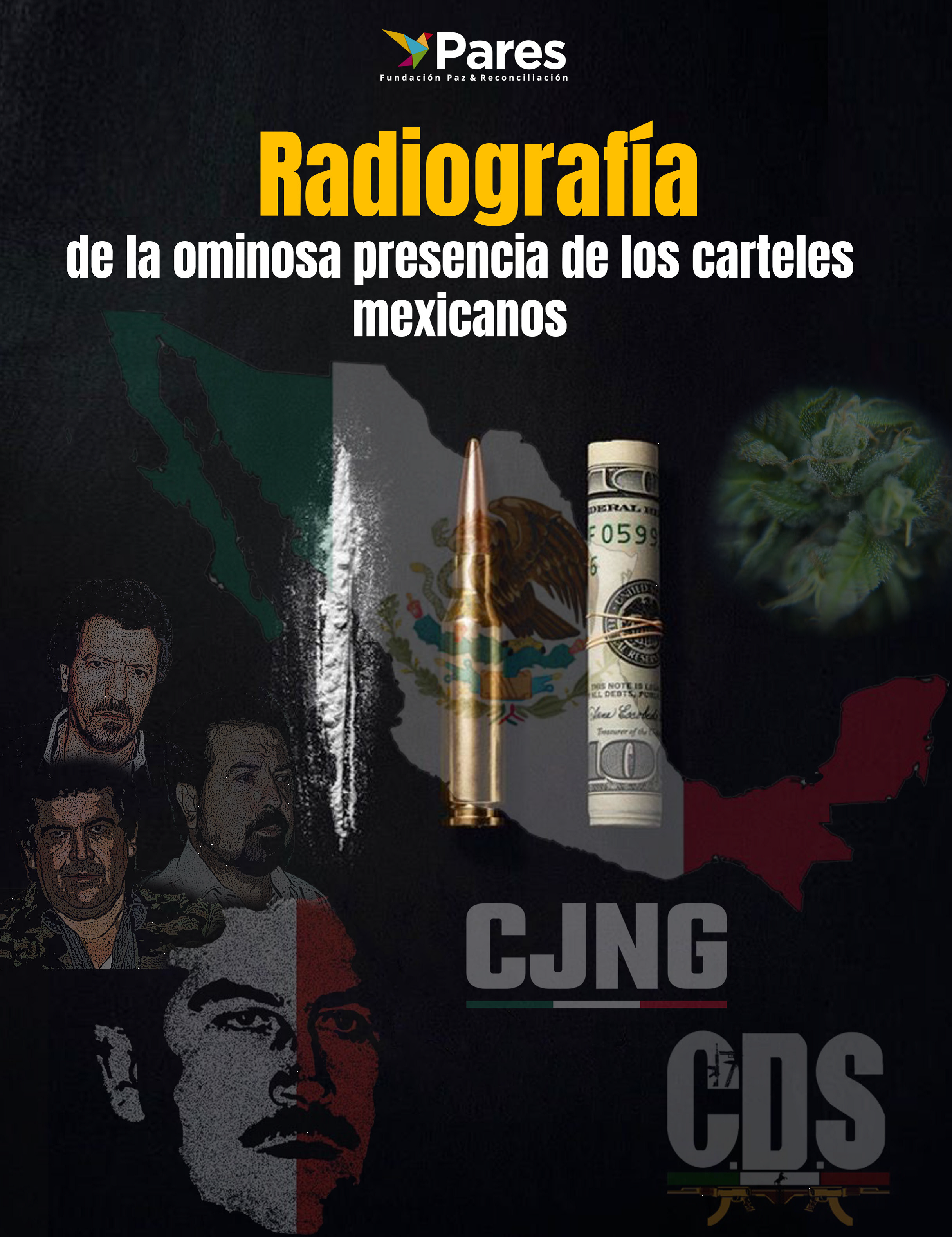
The report examines where and how powerful Mexican cartels are expanding the presence in Colombia to protect their supply chains
The Fundación Paz y Reconciliación (Peace and Reconciliation Foundation) has just published a report examining the proliferation of Mexican Cartels’ activities in Colombia. The report identifies several forms of cooperation and task sharing that have been developed between the illegal armed groups in Colombia and the cartels, based on avoiding destructive territorial disputes and meeting their respective needs for the benefit of all of the groups involved.
Although the relationships between illegal armed groups and other forms of organized crime in Colombia and Mexico has existed for several decades, starting with the large drug trafficking cartels of the 1970s-1980s, the relationships have become much more extensive and systematic due to the vast flows of capital and arms brought from the North American country and the dissolution or fragmentation of the largest illegal armed groups in Colombia (the paramilitaries and the FARC-EP) which has opened Colombia up to international competition and cooperation to control the illegal markets.
The latest study by Fundación Paz y Reconciliación, “Radiography of the presence of Mexican cartels in Colombia” (Radiografía de la presencia de los carteles mexicanos en Colombia), found that the recent influx of capital and weapons from Mexico has enabled another cycle of expansion and consolidation among the remaining illegal armed groups in Colombia such as the Gulf Clan, Caparrapos, Los Pachenca, People’s Liberation Army-EPL or Pelusos, and post-FARC Dissident Armed Group ( especially in south-western Colombia).
The renewed strengthening of Colombia’s illegal armed groups crime is also associated with taking advantage of the remnants of the illegal armed structures in the context of a power vacuum produced by the end of the FARC-EP as an armed insurgent group and the inability of the State to take control of the territories the FARC had occupied. During the last two decades, the Mexican cartels have also strengthened their operational capacity and international reach by expanding their actions throughout the northern triangle of Central America (Guatemala, Honduras and El Salvador), providing a bridge between Mexico and Colombia.
Beyond the substantial boost derived from their alliances with other organized crime groups, the Mexican cartels have had considerable success in infiltrating public security structures throughout the region, providing a degree of official cover for their subcontracting of criminal organizations for hired killers and to consolidate territorial control over related illegal activities. They have also subcontracted the Mara Salvatrucha crime group in Central America to provide additional protection for their cocaine shipments. In this sense, the transnational corporate enterprise continues to grow and diversify.
The Mexican cartels from Sinaloa and Jalisco have been the most active in Colombia, in particular by providing finance and distribution networks for the Pelusos, FARC Dissident Groups and Clan del Golfo and thereby filling the gap left by the demobilization of the FARC.
The study identifies two forms of relationship that have been developed between Mexican cartels and Colombian illegal armed groups: financing and coordination. Financing is given through the injection of large sums of capital and also weapons. This is the case for Los Caparrapos or Caparros in the Nudo de Paramillo subregion of Colombia. The articulation of the illegal armed groups has occurred through the systematic elaboration of joint tasks and the allocation of specific activities related to the management of the cocaine production and marketing chain. This type of relationship has manifested in the case of the relationship built between the Sinaloa Cartel and the Gulf Clan in Bajo Cauca, Antioquia and in Magdalena.
The emerging evidence suggests that the Mexican cartels’ concern that anarchy in the drug trafficking market after the FARC’s laying down of arms would interrupt their supply chains was the main factor motivating their decision to increase their participation in Colombia. Basically, three related phenomena were involved. The Mexican cartels recalled what happened following the paramilitary demobilization between 2003 and 2006, where a process of criminal fragmentation was generated that led to the creation of at least 100 illegal armed structures. As the FARC controlled many of the coca producing areas and the first part of the drug trafficking chain, they wanted to avoid a similar scenario. It was known in advance that the FARC were leaving, but the business had to continue, and the Mexican cartels wanted to avoid a bloodbath that would result from territorial disputes.
Secondly, in Colombia there was a certain parity between the remaining criminal organizations and none had the capacity to dominate the others. Therefore, the possibility of extremely destructive turf wars was very high, a fact recognized by all of the relevant groups, facilitating the initial intervention of the Mexican cartels to ensure a more or less peaceful division of the territory for all of the groups’ benefit. Lastly, in order to build the capacity to effectively assume responsibility for their respective activities in the supply chain, the illegal armed groups in Colombia needed a large injection of money, something the Mexican cartels could supply in abundance.
MORE ON THE TOPIC:






China involved in drug drug trafficking
If it were Venezuela, sure, but it’s Colombia. CIA all the way.
Yeah. The article must be named as “CIA is consolidating it’s assets in Southern America”
Escobar was CIAs hitman of Colombia. All this will be happening until Venezuela liberates American slaves in Co.